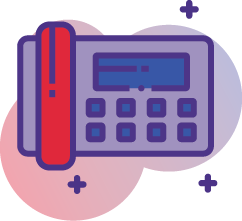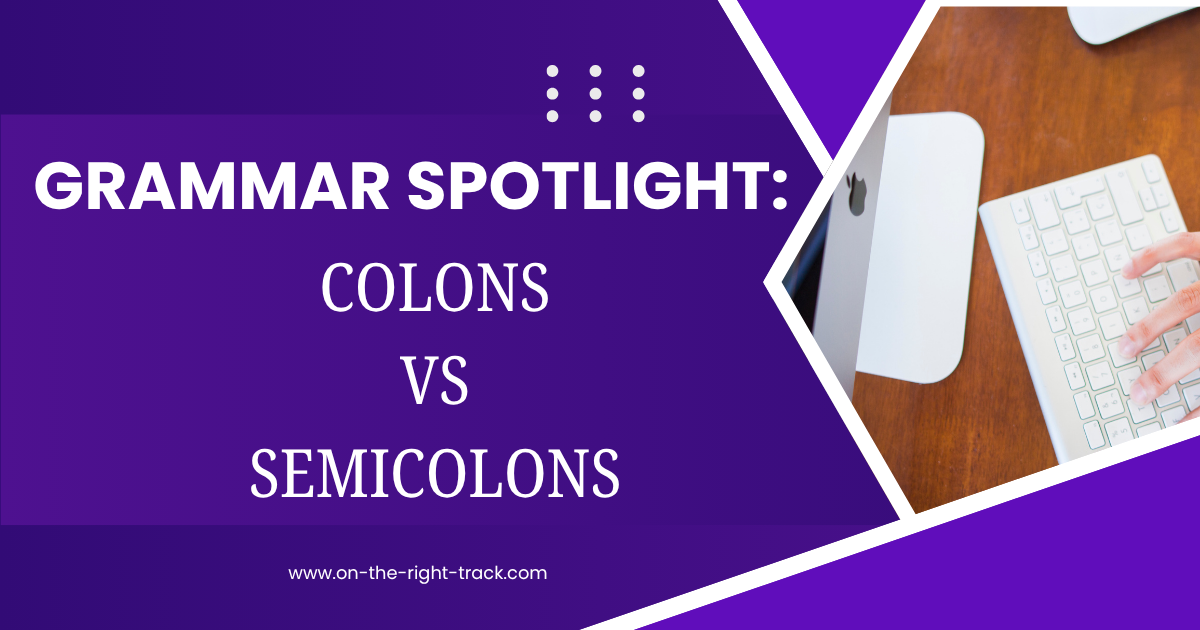High school grammar class was a long time ago for me. And honestly, I wasn’t paying much attention either, as the information didn’t seem useful at the time. Since then, I have realized that I communicate with most of my clients in written form most of the time, and I want to be competent and professional. And truthfully, I am a self-confessed “grammar geek” who learns new information daily.
I know that clear and accurate communication is a crucial component of my reputation. I know that when I see a major grammatical error, I cringe inside, knowing they didn’t realize they had made a mistake to begin with, and because they didn’t know, they didn’t know others saw it and judged them.
Last week, I posted one of my grammar updates and was asked: “What’s the difference between a colon and a semicolon—and when should I use them?” Several others jumped in to say that they also weren’t entirely clear, and whether it was because we weren’t paying attention in grammar class or because we know things change over time, it was time to update everyone on when and where to use semicolons vs. colons in your documentation.
A colon (:) introduces something—a list, an explanation, or a quote. Think of it like a drumroll: “Here comes something important!”
Not quite so simply, though. You must ensure that the line before the colon is a stand-alone sentence with both a verb (action) and a noun (person, place, or thing).
If you look at the examples below, each line before the colon could be a stand-alone sentence. If it isn’t, you cannot use a colon:
* I need you to order the following supplies: paper, pens, printer ink, and folders.
* She had one goal: to finish the report before year-end.
* He shared a powerful quote: “You can’t control anyone else’s behavior.”
Looking at the examples of how not to use a colon, you can see below the line before the colon doesn’t have a verb and a noun, showing that it isn’t a stand-alone sentence.
* I need: paper, pens, printer ink, and folders. “I need” isn’t a complete sentence. If you remove all the info after the colon, does it still make sense? “I need” doesn’t make sense, but “I need you to order the following supplies” does.
A semicolon (;) connects two complete thoughts that are closely related. It can also help untangle complex lists.
* The meeting was postponed; the client had a scheduling conflict.
* I finished the minutes early; however, I’m still waiting for approval.
* On our trip, we visited Toronto, Ontario; Calgary, Alberta; and Vancouver, British Columbia.
The first two examples connect the two complete thoughts. Remember, a colon has only one stand-alone sentence, but a semicolon connects two stand-alone sentences.
I could say, “The meeting was postponed. The client had a scheduling conflict.” Or I could connect them with a semicolon, “The meeting was postponed; the client had a scheduling conflict.”
A transitional word (or conjunction) between the two sentences messes this up, though.
If you wrote, “The meeting was postponed; because the client had a scheduling conflict,” you’ve messed up the two stand-alone sentences since “Because the client had a scheduling conflict” is not a stand-alone sentence.
I remember watching “Conjunction Junction” on School House Rock when I was a kid (here is a flashback for many of us: https://www.youtube.com/watch?v=LjdCFat9rjI), and I know that when using a conjunction (a connecting word), we don’t use a semicolon, but instead a comma.
“I love my job; and I enjoy working with my team” isn’t correct for a semicolon the same way that “The meeting was postponed; because the client had a scheduling conflict” isn’t correct. The sentence after the semicolon doesn’t make sense.
The third example from above shows how a semicolon can make complicated lists easier to read. When you list the City next to the Province/State, there should be a comma between them. The semicolon makes the entire list easier to read.
“On our trip, we visited Toronto, Ontario, Calgary, Alberta, and Vancouver, British Columbia.”
Without using the semicolon, the list is very confusing and appears to list six different places instead of identifying the City and Province and using semicolons in the list.
But, like my earlier examples, there are exceptions.
“I ordered pens; paper; and markers” isn’t complicated enough to warrant the semicolon the same way the City and Province are.
Quick Reference Guide
Colon (:) Introducing a list, explanation, or quote after a full sentence
She brought everything she needed: her laptop, charger, and notes.
Semicolon (;) Connecting two stand-alone sentences
I submitted the report; now I’m waiting for feedback.
Semicolon (;) Separating items in a complex list
We hired John, the intern; Alice, the coordinator; and Mike, the IT lead. |
We all need to improve our writing, and the excuse that you didn’t know doesn’t take away any negative impact on your reputation or justify mistakes. Grammar won’t always be easy, but it will always be worth it.










